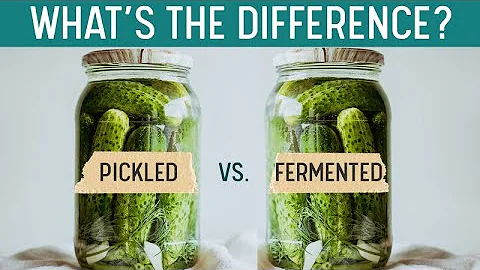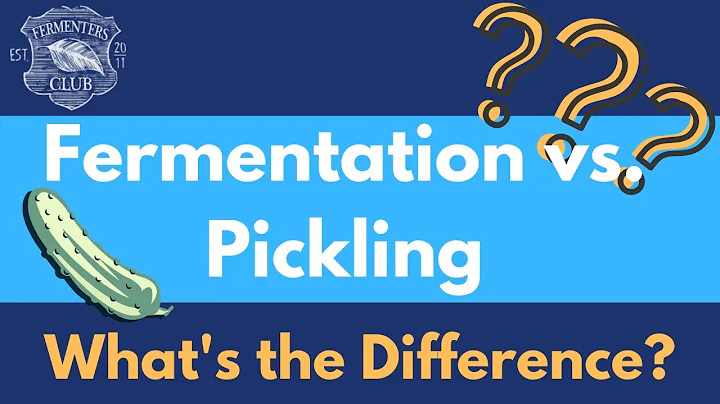What is the difference between pickle and shelve?
Solution 1
pickle is for serializing some object (or objects) as a single bytestream in a file.
shelve builds on top of pickle and implements a serialization dictionary where objects are pickled, but associated with a key (some string), so you can load your shelved data file and access your pickled objects via keys. This could be more convenient were you to be serializing many objects.
Here is an example of usage between the two. (should work in latest versions of Python 2.7 and Python 3.x).
pickle Example
import pickle
integers = [1, 2, 3, 4, 5]
with open('pickle-example.p', 'wb') as pfile:
pickle.dump(integers, pfile)
This will dump the integers list to a binary file called pickle-example.p.
Now try reading the pickled file back.
import pickle
with open('pickle-example.p', 'rb') as pfile:
integers = pickle.load(pfile)
print integers
The above should output [1, 2, 3, 4, 5].
shelve Example
import shelve
integers = [1, 2, 3, 4, 5]
# If you're using Python 2.7, import contextlib and use
# the line:
# with contextlib.closing(shelve.open('shelf-example', 'c')) as shelf:
with shelve.open('shelf-example', 'c') as shelf:
shelf['ints'] = integers
Notice how you add objects to the shelf via dictionary-like access.
Read the object back in with code like the following:
import shelve
# If you're using Python 2.7, import contextlib and use
# the line:
# with contextlib.closing(shelve.open('shelf-example', 'r')) as shelf:
with shelve.open('shelf-example', 'r') as shelf:
for key in shelf.keys():
print(repr(key), repr(shelf[key]))
The output will be 'ints', [1, 2, 3, 4, 5].
Solution 2
According to pickle documentation:
Serialization is a more primitive notion than persistence; although pickle reads and writes file objects, it does not handle the issue of naming persistent objects, nor the (even more complicated) issue of concurrent access to persistent objects. The pickle module can transform a complex object into a byte stream and it can transform the byte stream into an object with the same internal structure. Perhaps the most obvious thing to do with these byte streams is to write them onto a file, but it is also conceivable to send them across a network or store them in a database. The shelve module provides a simple interface to pickle and unpickle objects on DBM-style database files.
Related videos on Youtube
Comments
-
zubinmehta almost 4 years
I am learning about object serialization for the first time. I tried reading and 'googling' for differences in the modules pickle and shelve but I am not sure I understand it. When to use which one? Pickle can turn every python object into stream of bytes which can be persisted into a file. Then why do we need the module shelve? Isn't pickle faster?
-
zubinmehta over 13 yearsIs it like the case that pickle is like a very low-level stuff and shelve gives us more ways to store complex objects?
-
Mike McKerns about 10 years
shelveprovides a dictionary-style interface to pickling. A dictionary interface to pickling is convenient for implementing things like caching of results (so you don't ever recalculate) -- the keys being*args,**kwdsand the value being the calculated results. -
Mike McKerns over 8 yearsNote that
shelveDOES NOT enable one to store objects thatpicklecannot pickle. If you are looking for a better version ofshelvethat can both store the majority of python objects as well as provides a more flexible dictionary interface to disk or database… then you might want to look atklepto. See: stackoverflow.com/a/32586980/2379433
-
-
aniketd over 8 yearsCan you shed some light on what the 'c' flag is for in the call to
shelve.open? I googled but could not find an answer. Thanks in advance. -
wkl over 8 years@aniketd the
'c'flag tellsshelveto open the file for reading and writing, or to create the file if needed. It's also described inshelve.open's documentation, which shares the same flags asanydbm.open. -
Pyderman over 8 years@birryree What version of Python does your example work with? On 2.7.10, it's indicating that there is no Context Manager implemented for shelve:
----> 5 with shelve.open('shelf-example-file.txt', 'c') as shelf: 6 for k, v in my_dict: 7 shelf[k] = v AttributeError: DbfilenameShelf instance has no attribute '__exit__' -
wkl over 8 years@Pyderman I must have verified my code in 3.x but not 2.7.x, probably assuming context manager usage wouldn't be different between them. I updated my examples to say that if you're using Python 2.7, you should
import contextlibin your code and then wrap yourshelve.openwithcontextlib.closing(). -
 lucidbrot almost 5 yearsThis answer would benefit from a paragraph about when to prefer which, and whether pickle is actually significantly faster
lucidbrot almost 5 yearsThis answer would benefit from a paragraph about when to prefer which, and whether pickle is actually significantly faster









